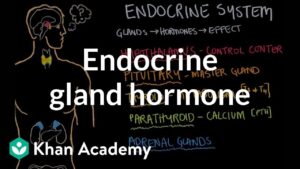Dr Kiel quickly reviews and explains Insulin Like Growth Factor 1 (IGF-1) and all the effects it has on your body. MORE TESTOSTERONE KNOWLEDGE https://www.youtube.com/playlist?list=PLt6puIp2CPGW0tIf5L82gvkxDhaSQnME3 READ MORE https://www.healthydocs.net/home/2017/insulin-like-growth-factor-1-igf-1-explained-everything-you-should-know TESTOSTERONE EXPLAINED https://www.youtube.com/watch?v=urgNiKfpKf8 This playlist covers things like testosterone and other androgens, DHEA (Dehydroepiandrosterone), insulin like growth factor (igf-1, igf 1), and human growth hormone (hgh). The emphasis is understanding these hormones and ways to promote them naturally. Please like, subscribe, comment and share! SUBSCRIBE: https://www.youtube.com/user/DrJohnKiel FACEBOOK: https://www.facebook.com/medicinelifestyle TWITTER: https://twitter.com/LifestyleMedYou I wanted to take a few minutes to explain Insulin-Like Growth Factor 1 to you. This molecule is also called somatostatin C and more often IGF-1 for short. This hormone is widely discussed in the sports world for possible performance enhancement. It also shares the common name insulin with the medication used to treat type 1 diabetes. For these reasons, I thought it would be worth discussing and spending some time reviewing. Briefly, I will discuss the anatomy, physiology and regulation of IGF-1. IGF-1 secretion is regulated by the release of human growth hormone, which is secreted from the pituitary gland. I have made a detailed video explaining growth hormone and I would encourage you to check that out if you want to know more. The function of IGF-1 and HGH overlap significantly and the distinction between the effects of HGH and IGF-1 are not entirely clear, and the research in this area is ongoing. IGF-1 is produced and secreted primarily from the liver, although other peripheral tissues, such as bone, produces its own IGF-1. The reason that insulin-like growth factor has the name is that it has an insulin like subunit that binds to insulin receptors, but only has 10% of the potency of regular insulin on glucose regulation. This is an anabolic hormone; in other words it ‘promotes growth’. While this includes skeletal muscle, it’s certainly not limited to it. It’s worth noting that it is not androgenic, as opposed to testosterone, meaning it doesn’t promote male sex characteristics such as facial hair and deeper voice. It’s primary effect is growth stimulation. This is a balanced effect which affects all tissues equally, not just skeletal muscle. This occurs because it is released into the bloodstream by the liver, although local production by bones probably is a little more effective locally. Production peaks during puberty where whole body growth is at it’s greatest. Other functions: Whole body protein synthesis and inhibition of protein breakdown (proteolysis) Enhanced bone mineralization Low blood sugar (hypoglycemia, remember it acts like insulin) Positive nitrogen balance Increased kidney filtration Partial reversal of catabolic activity of glucocorticoids on protein synthesis Diabetics: increased insulin sensitivity (not approved for this use)

Insulin Like Growth Factor 1 (IGF-1) Explained: Everything You Should Know
- Post author:
- Post published:May 31, 2021
- Post comments:0 Comments
You Might Also Like

Examples of Low-Impact Aerobic Exercises : General Fitness Tips

Calisthenics Chest Workout – SMASH Pecs in 10 Minutes!

Abscess Symptoms

Energy Metabolism PART 2 BMR

Elements of Life

What is Trans Fat? Is Trans Fat Bad for You?

chest/back pullover pecs and lats @ryan_spiteri gym beaston

Overweight & Obesity Video – 10

Skeletal System

Cricket Video – 2

What are Lipids

Garlic Nutrition Video – 1

Gymnastics Video – 2

ONE MUSCLE GROUP MANY GIRLS NEGLECT | BIKINI BODY SERIES EP4

What is motor neurone disease (MND)?

How to Read Nutrition Facts | Food Labels Made Easy

First Aid Video – 3

Workout Insanity 2014 Video Training + PDF Nutrition Guide

Digestion and Absorption of Carbohydrates PART 1/2 – Carbohydrate Metabolism – Glucose Metabolism

Deficiency & Malnutrition Video – 2

8 Stationary Exercise Bike Workout Injuries You Can Avoid

Urinalysis – OSCE Guide

Low Sperm Count: Symptoms, Causes, Diagnosis and Treatment

TOP 5 Freakiest Bodybuilders Ever In Bodybuilding History

Endocrine gland hormone review | Endocrine system physiology | NCLEX-RN | Khan Academy

4 Best Exercises For Flat Stomach | Tone Abdominal

Power Rack Reverse Hyper Extension

What Is Yoga Video – 6

Urea and the Ornithine cycle

Pediatric Surgery Video – 1

Skeletal System And Asanas Video – 3

Intermittent Fasting & Fasting Video – 4

Pediatric Physiotherapy Video – 1

Top 3 Carb Food For Lean Muscle Growth

How to Produce More Milk – breastfeeding tips

Anemia (Medical Definition) | Quick Explainer Video

SIZE 8 – Pre Workout Drink (NO SUPPLEMENT) | Pure Vegetarian Muscle Building Program by Guru Mann

What is STRETCHING? What does STRETCHING mean? STRETCHING meaning, definition & explanation

What should I eat after a workout – POST EXERCISE NUTRITION – BeerBiceps Diet

Enalapril Maleate 5 mg 10 mg 20 mg tablets and side effects

Catabolism

